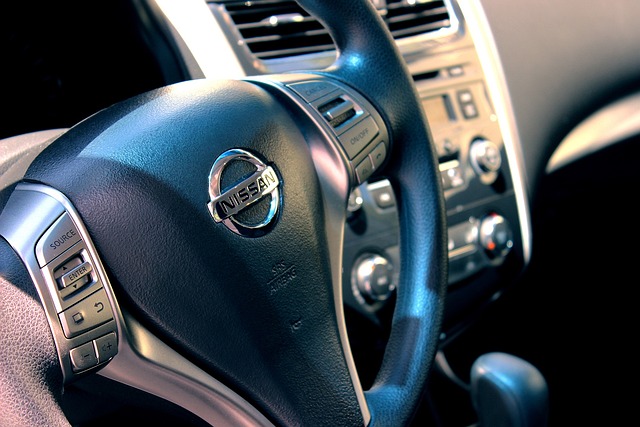A vehicle purchase agreement is a critical legal document that formalizes all aspects of a car sale between a buyer and seller. It must include complete details such as the parties' information, precise vehicle specifications, sales price, payment terms, and any trade-ins or additional fees. The contract should accurately describe the vehicle's condition, including any damages or repairs, to avoid future disputes. Essential elements like warranty details and the process for transferring the title and registration must be clearly stated. For the agreement to be legally binding, it needs to be signed, dated, and notarized by both parties. Post-purchase, the buyer is responsible for updating the vehicle's certificate of ownership with the DMV, marking the completion of the transaction and transfer of legal ownership. Accuracy in all details is paramount to ensure transparency, fairness, and legal protection throughout the process.
When navigating the complex landscape of vehicle ownership, a comprehensive understanding of the vehicle purchase agreement becomes paramount. This critical document not only delineates the terms and conditions of the sale but also acts as a cornerstone for updating the certificate of ownership. By ensuring meticulous recording of all transactional details within this agreement, buyers and sellers can safeguard against potential future disputes and streamline the process of transferring vehicle title. This article will explore the key components of a vehicle purchase agreement, the procedural steps to complete it accurately, and the importance of precise information recording. Furthermore, we’ll delve into the post-signing stages to ensure a seamless transition of ownership.
- Key Elements of a Vehicle Purchase Agreement
- Steps to Complete a Vehicle Purchase Agreement
- Recording Accurate Information in the Agreement
- Transferring Title Post-Purchase Agreement Signing
Key Elements of a Vehicle Purchase Agreement

A vehicle purchase agreement is a critical legal document that encapsulates the specifics of a motor vehicle transaction between a buyer and a seller. This agreement is not merely a formality; it serves as a legally binding contract that outlines the rights, obligations, and terms both parties have agreed upon. Central to this document are key elements that protect the interests of all involved. These elements include the full legal names and contact information of the buyer and seller, the vehicle’s make, model, year, Vehicle Identification Number (VIN), and odometer reading at the time of sale. The agreement should specify the sale price, the method of payment, and any other financial arrangements such as trade-ins or additional fees. It also details the condition of the vehicle, noting any existing damages or repairs completed, which is crucial for both parties to avoid future discrepancies. The transfer of ownership is facilitated by the agreement, which includes the signing over of the title and registration to the new owner. Additionally, warranties, if any, should be clearly stated, along with information on any remaining manufacturer’s warranty or aftermarket warranties that the buyer will inherit. Lastly, the agreement must be signed and dated by both parties in the presence of a notary public to ensure its validity and enforceability. By meticulously covering these elements, a vehicle purchase agreement helps ensure transparency and fairness for all parties involved in the transaction.
Steps to Complete a Vehicle Purchase Agreement

When purchasing a vehicle, completing a thorough and accurate purchase agreement is crucial for both parties involved. The process begins with the buyer and seller agreeing on the terms of the sale, which include the vehicle’s price, payment methods, and any contingencies that must be met before the transaction is finalized. A detailed description of the vehicle, including its make, model, year, Vehicle Identification Number (VIN), and mileage, should be included to avoid ambiguity and ensure both parties have a clear understanding of what is being bought and sold.
Once the terms are agreed upon, the purchase agreement should be drafted. This document typically includes the names and contact information of both buyer and seller, a detailed description of the vehicle, the sale price, financing arrangements if applicable, and any warranties or as-is conditions. It’s important to specify the date of sale, the odometer reading at the time of purchase, and any trade-in details if one is involved. Both parties should review the agreement carefully, ensuring all information is accurate and complete. After signing the purchase agreement, both parties should keep a copy for their records. The buyer will then use this agreement to update the vehicle’s certificate of ownership with the state’s department of motor vehicles (DMV), which officially transfers the title from the seller to the buyer, completing the transaction process.
Recording Accurate Information in the Agreement

When a vehicle changes hands, it is imperative that all transactional details are recorded with precision in the purchase agreement to ensure clarity and legality. This document acts as a critical reference point, detailing the conditions of the sale, including the vehicles’ identification number, make, model, year, and any relevant odometer readings. Accurate information in the agreement protects both parties by establishing a clear understanding of what is being transacted. It serves as indisputable evidence should there be any future discrepancies or issues regarding ownership or the condition of the vehicle at the time of sale. Moreover, it is essential for the buyer to verify and confirm all details before signing, as this information is required when updating the certificate of ownership. The purchase agreement must reflect the exact specifications of the vehicle to avoid misunderstandings and to facilitate a smooth transition of title. Any deviation in the recorded details from the actual condition or features of the car can lead to complications, potentially invalidating warranties or leading to legal repercussions if discrepancies arise later on. Therefore, both parties must approach this document with diligence, ensuring that every aspect of the transaction is accurately represented, thereby safeguarding their interests and rights post-purchase.
Transferring Title Post-Purchase Agreement Signing

Upon signing a vehicle purchase agreement, both the buyer and seller must ensure that the next step in the process is the timely transfer of the title. This transfer is not automatic upon signing the agreement; it is a critical legal step that officially recognizes the change of ownership. The buyer should promptly file the necessary forms with the relevant state or provincial department of motor vehicles (DMV). These forms typically include a bill of sale, the completed and signed purchase agreement, and any other documentation required by law to transfer the title into the buyer’s name. It is imperative that all information on these documents is accurate and complete to avoid delays or complications. The seller’s signature notarized if required, releases their rights to the vehicle and acknowledges the transfer of ownership. The buyer, upon successful title transfer, will receive a new certificate of title in their name, which they must carry when operating the vehicle to demonstrate legal ownership. This process safeguards both parties by providing clear and official documentation that can be used for insurance purposes, registration, and any future sale or transfer of the vehicle. Ensuring a smooth title transfer post-purchase is essential for maintaining a clear and legally recognized chain of ownership, which protects the buyer’s investment and rights.
When purchasing a vehicle, finalizing a purchase agreement is a critical step that ensures both buyer and seller are on the same page regarding the transaction’s specifics. This meticulously crafted document not only sets forth the terms but also acts as a cornerstone for a transparent and legally sound transfer of ownership. By adhering to the outlined process in the article, which covers the key elements, steps to completion, and accurate recording of information, buyers and sellers can navigate the vehicle purchase landscape with confidence. The smooth execution of these steps minimizes the potential for future discrepancies and streamlines the title transfer process. In essence, a well-prepared vehicle purchase agreement is indispensable for securing your investment and legal rights, making it a pivotal component in any vehicle transaction.



